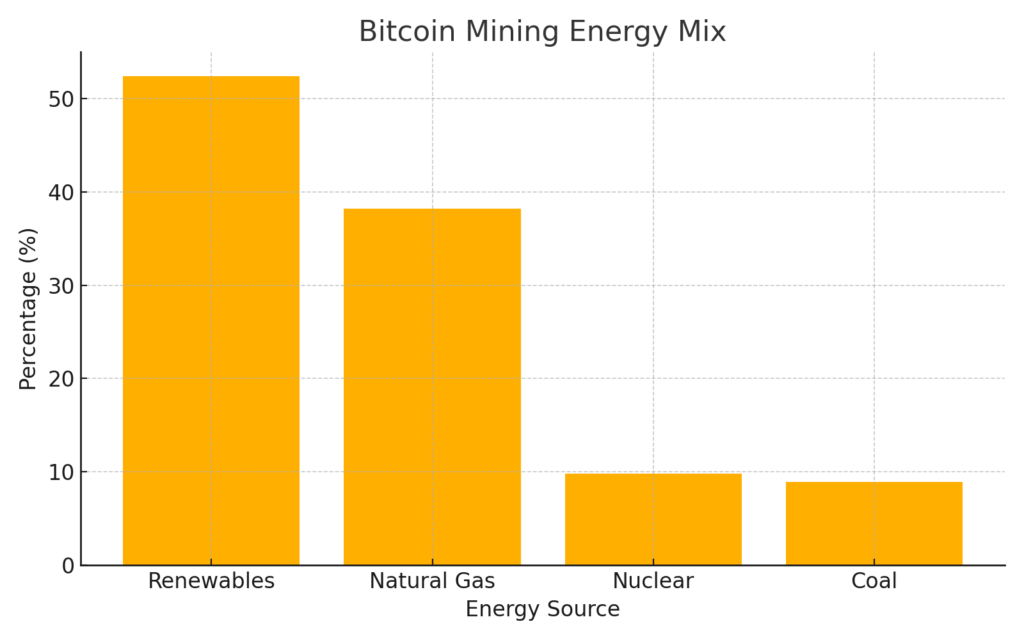
Main Points:
- Bitmain will open its first U.S. ASIC chip manufacturing facility by early 2026.
- A new U.S. headquarters is slated for Texas or Florida by Q3 2025.
- The U.S. now represents 75.4% of reported global Bitcoin mining activity, with 52.4% of that powered by renewables.
- Major Chinese ASIC makers (Bitmain, MicroBT, Canaan) collectively hold over 99% of the hardware market, with Bitmain at 82%, MicroBT 15%, and Canaan 2%.
- Onshore production mitigates tariff exposure, customs delays, and regulatory risks.
- Industry trend: Canaan and MicroBT are also localizing U.S. operations to bypass elevated trade tensions.
- Geopolitical stability, faster delivery, and enhanced repair services strengthen North American miner appeal.
- The shift highlights broader supply-chain diversification and environmental efficiency imperatives.
Introduction: A Pivotal Expansion
As global Bitcoin mining undergoes tectonic shifts in geography, energy usage, and regulatory scrutiny, Bitmain—the world’s leading manufacturer of Bitcoin ASIC chips—has announced plans to establish its first U.S.-based manufacturing facility by early 2026 and a new U.S. headquarters in Texas or Florida by the third quarter of 2025. This strategic gamble is designed to accelerate delivery and streamline repair services for North American miners while sidestepping the tariff and customs hurdles that have beset Chinese manufacturers since late 2024.
Driving Forces Behind U.S. Expansion
Three key factors underpin Bitmain’s U.S. push:
- Tariff Avoidance: The imposition of a base 10% tariff plus an additional 20% on Chinese imports makes ASIC chips significantly more expensive for U.S. buyers. Onshore manufacturing neutralizes these costs .
- Regulatory Risk Mitigation: In late 2024, U.S. Customs and Border Protection detained thousands of Bitmain units over ties to a Chinese semiconductor partner under investigation, starkly illustrating the vulnerability of cross-border supply chains. Domestic production addresses these uncertainties.
- Operational Efficiency: Faster logistics, reduced customs clearance times, and localized repair centers translate into higher uptime for miners and lower total cost of ownership.
Strategic Location and Timeline
Bitmain’s global business chief, Irene Gao, has indicated that the plant will begin initial chip production in early 2026, ramping up to full-scale operations by the end of that year. Concurrently, Bitmain will solidify its North American presence with a headquarters in either Texas or Florida by Q3 2025, hiring approximately 250 local staff focused on manufacturing and maintenance.
Mitigating Tariff and Regulatory Risks
With U.S.–China tensions reshaping technology geopolitics, Chinese ASIC makers are racing to diversify manufacturing footprints. Canaan has already kicked off pilot production, and MicroBT is actively implementing a U.S. localization strategy, both aiming to dodge erratic trade policies and secure long-term market access .
Shifting Global Mining Landscape
The Cambridge Digital Mining Industry Report underscores the new reality: North America commands 75.4% of reported Bitcoin mining activity, up sharply since China’s 2021 crackdown, with Canada adding another 7.1%. This concentration exceeds 82% when combined with Canada—signaling a major realignment from Asia-centric mining hubs.
[Insert Energy Mix Bar Chart here]

Market Share and Industry Competition
Bitmain, MicroBT, and Canaan together manufacture over 99% of the world’s Bitcoin ASIC hardware. A breakdown of market share reveals Bitmain’s dominance at 82%, MicroBT’s 15%, and Canaan’s 2%, leaving a negligible share to all others.
[Insert Market Share Pie Chart here]

Environmental and Energy Considerations
The same Cambridge report shows that sustainable energy use in Bitcoin mining has risen to 52.4%, driven by hydropower, wind, and solar, with natural gas (38.2%), nuclear (9.8%), and coal (8.9%) comprising the remainder. U.S. miners—boosted by access to clean power in regions like Texas and the Pacific Northwest—are leading this green transition.
Broader Implications for the Crypto Ecosystem
Bitmain’s U.S. facility is more than a manufacturing plant; it is a bellwether for the industry’s evolution. By localizing production, major ASIC providers are:
- ** bolstering resilience** against geopolitical disruptions;
- ** enhancing service quality** through faster repairs;
- ** reinforcing the U.S. position** as the hub of mining innovation;
- ** underscoring ESG credentials** as clean-energy mining gains traction.
This localization trend may catalyze further vertical integration in the crypto hardware sector, encourage innovation in energy-efficient mining, and shape regulatory dialogues on critical tech infrastructure.
Conclusion
Bitmain’s planned U.S. factory and headquarters represent a multi-dimensional strategic shift—addressing trade barriers, operational efficiency, and environmental imperatives. As the U.S. cements its hegemony in Bitcoin mining (75.4% of hashpower) and renewables power over half of global mining activity, onshore manufacturing by leading ASIC giants will redefine competitive dynamics. For investors seeking new crypto-asset opportunities and operational efficiencies, this pivot signals fertile ground: from hardware innovation to green-mining ventures, the American mining landscape is poised for transformative growth.

